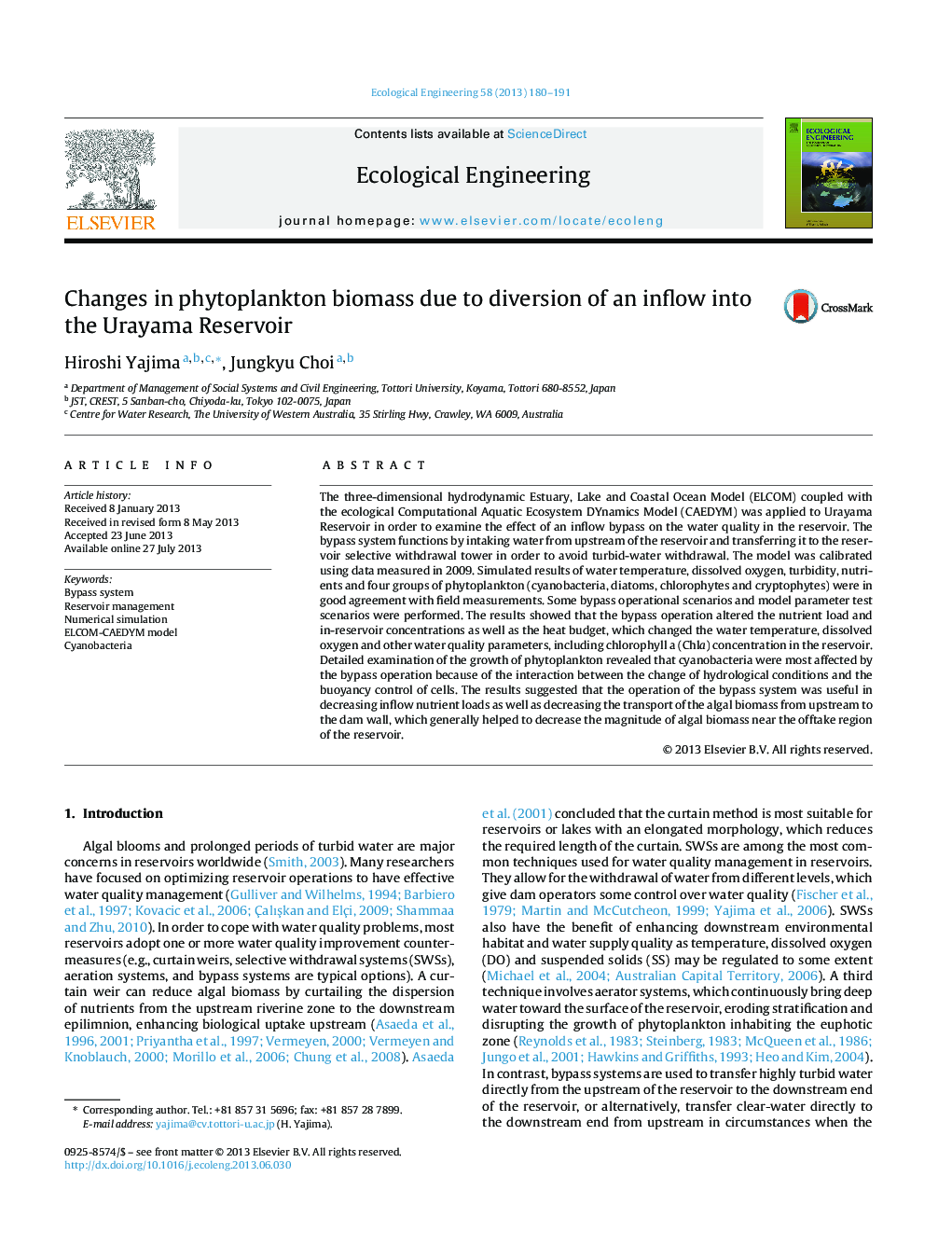| Article ID | Journal | Published Year | Pages | File Type |
|---|---|---|---|---|
| 6302507 | Ecological Engineering | 2013 | 12 Pages |
â¢The simulation could reproduce yearly variations of four phytoplankton biomasses.â¢Simulations clarified effects of reduced nutrient loads on phytoplankton biomasses by diversion of an inflow into the reservoir.â¢Simulations clarified effects of hydrodynamics on phytoplankton biomasses by diversion of an inflow into the reservoir.â¢Cyanobacteria's buoyancy control capability much affects the model predictions.
The three-dimensional hydrodynamic Estuary, Lake and Coastal Ocean Model (ELCOM) coupled with the ecological Computational Aquatic Ecosystem DYnamics Model (CAEDYM) was applied to Urayama Reservoir in order to examine the effect of an inflow bypass on the water quality in the reservoir. The bypass system functions by intaking water from upstream of the reservoir and transferring it to the reservoir selective withdrawal tower in order to avoid turbid-water withdrawal. The model was calibrated using data measured in 2009. Simulated results of water temperature, dissolved oxygen, turbidity, nutrients and four groups of phytoplankton (cyanobacteria, diatoms, chlorophytes and cryptophytes) were in good agreement with field measurements. Some bypass operational scenarios and model parameter test scenarios were performed. The results showed that the bypass operation altered the nutrient load and in-reservoir concentrations as well as the heat budget, which changed the water temperature, dissolved oxygen and other water quality parameters, including chlorophyll a (Chla) concentration in the reservoir. Detailed examination of the growth of phytoplankton revealed that cyanobacteria were most affected by the bypass operation because of the interaction between the change of hydrological conditions and the buoyancy control of cells. The results suggested that the operation of the bypass system was useful in decreasing inflow nutrient loads as well as decreasing the transport of the algal biomass from upstream to the dam wall, which generally helped to decrease the magnitude of algal biomass near the offtake region of the reservoir.
